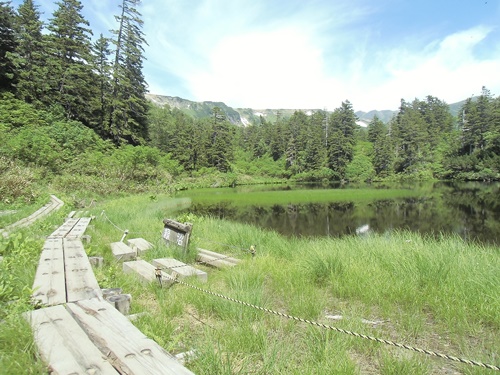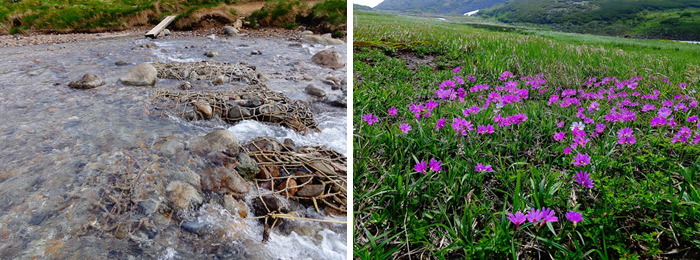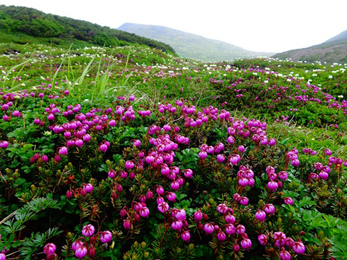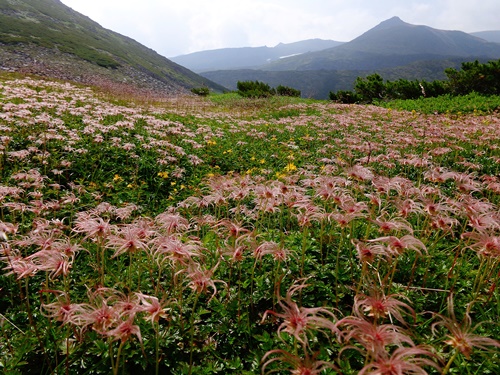Yesterday, the Visitor Center held a course and marshland walk titled “Kogen Onsen-numa Route.”
The area of the walk is popular with climbers during the fall foliage season. The cluster of ponds was formed when landslide material from Takanegahara became deposited there and then subsided over many, many years. Water filled the resulting depressions to form more than 100 ponds.
The numerous ponds of various sizes seemed to form a shape resembling an open folding fan (ogi in Japanese) when they were first discovered, and therefore this location was called “Ogigahara.”
The area was discovered in 1916. The forest road there was built as part of work to deal with trees knocked over by the “Toya-maru Typhoon” of 1954 and later extended to the hot spring area. The Daisetsu Kogen Onsen Hotel was built in 1963. The discovery of the Kogen-numa area was noted on a surveyed topographical map in 1926, and the walking course around the ponds was completed in 1961.
Over 150 species of plant can be seen in the area, among them Hypericum yojiroanum, which is a plant specific to the Daisetsu area, and Viola epipsiloides, which is a plant specific to Hokkaido.
Photo: Near Midori-numa Aug. 3




